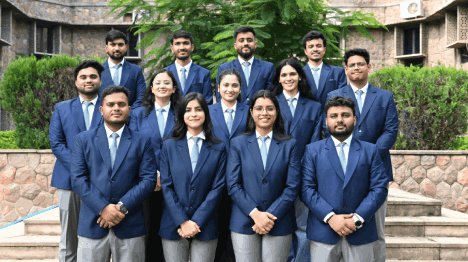- About Us
- Academics
Schools
Programs
General Information
- Faculty
The faculty members and researchers working at IIHMR University come from varied backgrounds including, but not limited to medicine, public health, management, economics, statistics, demography, human geography, social and behavioral sciences, rural development and pharmaceuticals.
- Admissions
- Research
.Publications & Journal
- Executive Education
Executive Programmes
- Online Certification Courses
ONLINE CERTIFICATION Courses
- Training
- Placements
- Fee Payment
- NAAC
- IQAC
- NIRF
- Webinars
- About Us
- About IIHMR University
- Board of Management
- Academic Council
- Board of Studies
- Research Board
- Institutional Review Board
- Finance & Audit Committee
- Departmental Research Committee
- Chairperson's Message
- President's Message
- IIHMR University Act
- Infrastructure
- Collaboration
- Ranking
- Board of Studies (School of Digital Health)
- Awards & Accolades
- Academics
- Institute of Health Management Research
- School of Pharmaceutical Management
- School of Development Studies
- School of Digital Health
- SD Gupta School of Public Health
- MBA (Hospital and Health Management)
- MBA (Pharmaceutical Management)
- MBA (Development Management)
- MBA (Healthcare Analytics)
- Master of Public Health
- Student Manual – Cohort 9 (2021-2023)
- Master of Public Health (Cooperative programme with Johns Hopkins University)
- Ph. D.
- MBA CSR & ESG Management (Executive)
- MBA Sustainable Business Management (Executive)
- Common Information for all the Programs
- Academic Calendar
- Student Handbook 2020-21
- Committees
- Policies
- Annual Exam Calendar
- Library
- Faculty
- Officers of University
- Dean of Institute of Health Management Research
- Dean of School of Pharmaceutical Management
- Dean of School of Development Studies
- Dean of SD Gupta School of Public Health
- Dean of School of Digital Health
- School of Digital Health
- Faculty List A to Z
- Faculty List Designation Wise
- Faculty List School Wise
- Admissions
- Research
- Executive Education
- Training
- Placements
- Alumni
- Events
- Job Openings
- Contact
- Research
Are Women of Indian Sundarbans Living in Dark: A Gender Analysis of Eye Health Problem
Agency : RinGs Consortium, Johns Hopkins Bloomberg School of Public Health, USA
The study aimed to assess the role of gender in health care seeking for visual impairments for males and females aged50 years and above in the Indian Sundarbans. It studied differences in perception of visual impairment, detection, care seeking and financing for eye health among elderly males and females. It explored the difference in dependencies of the visually impaired elderly individuals by gender and other social determinants. The study was carried out in two blocks of the region: one with poor physical accessibility and another with better physical accessibility. It uses a mixed methods approach. An intersectional analysis has been adopted to understand how social identities of gender, age and disability intersect resulting in differential patterns in health status and care seeking.
The study findings have significant implications for policy. Eye health is not a priority for the elderly in the Indian Sundarbans. Care seeking for eye health differs among the elderly in the different age groups. It is generally delayed. There are gender differentials in seeking inpatient and outpatient care for eye health conditions. Male privileges get offset with advancing age. The care seeking behavior of the elderly females continues to be restricted. When gender is considered alongside education, we can see that education is a bulwark among men only. There is a need for recognizing the heterogeneous nature of the elderly. Without applying an intersectionality lens to the analysis, such distinctions would be lost. Analysis using single stratifiers (e.g. gender, education) will miss different degrees of vulnerability that the elderly may be exposed to. Policies for the elderly need to be more granulated in their approach.



